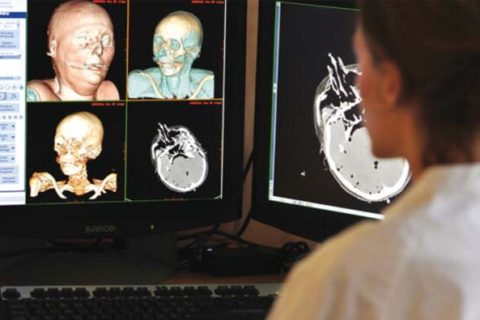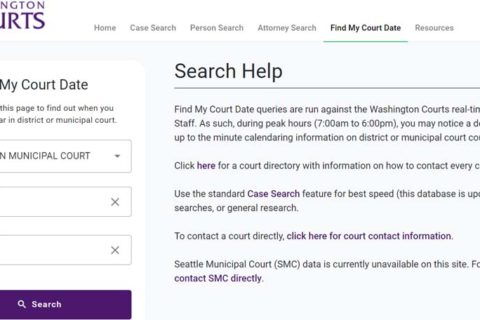The high number of cybercrime cases has led some parties to deal with and investigate them until they are revealed. Since cybercrime is a digital crime that involves the use of any digital device connected to a network, cybercrime investigation is also required to handle it.
To conduct a cybercrime investigation, it will require a number of advanced tools and excellent techniques that not just anyone can use. These play critical roles in finding the culprit and solving these virtual corruptions, as well as minimizing cybercrime.

To get to know more about what tools and techniques the cybercrime investigators use, you can dive into our post. We’ll also show you how a cybercrime investigation works and who can conduct a cybercrime investigation. Let’s check them out!
How Does a Cybercrime Investigation Work?
Basically, a cybercrime investigation is carried out in a series of processes to reveal the cyber criminals. The processes of a cybercrime investigation include investigating, analyzing, and recovering critical forensic digital data from the networks that are involved in the attack—it could be the web and/or an area network.
Criminal justice agencies, national security agencies, and private security firms are among those who conduct cybercrime investigations. Traditional law enforcement agencies are now looking into not only real-world crimes but also crimes committed on the internet.
Since conducting a cybercrime investigation is not easy, the investigators must be experts in computing, understand software and file systems, operate the systems, and also understand how networks and hardware work. Of course, it requires years of study to learn how to deal with any difficult cases—the most important thing is to get those cases resolved.
The cybercrime investigators should be knowledgeable enough to figure out the following things:
- How the interactions between these components occur
- A full picture of what happened
- Why it happened
- When it happened
- Who conducted the cybercrime itself
- The way victims can protect themselves in the future against these sorts of cyber threats
When new reports and digital new agencies show that cybercrime is on the rise, cybercrime investigation becomes critical in keeping the web safe.
Tools Required for Cybercrime Investigation
Depending on the techniques the investigators use, the cybercrime investigation tools include thousands of utilities. The majority of the tools of cybercrime investigation are dedicated to the forensic analysis of knowledge after the investigators have the evidence in hand.
Of course, there are numerous tools for every sort of cybercrime, but this post will show you some of the best ones. Here’s a list of the best tools for cybercrime investigation!
1. X-Way Forensics
X-Way Forensics is one of the most complete forensic tools for Windows-based operating systems. This tool is widely supported for almost any version of Windows, including Windows 10 (2012), 8.1, 8, 7, 2008, Vista, 2003, and XP—supporting both 32 and 64 bits.
One of its useful features is that it’s fully portable, so it can be run easily from a memory stick and taken from one computer to another. Some main features are the ability to do disk cloning and imaging, read partitions from raw image files, create RAID arrays, use HDDs, use LVM2, and much more.
2. CAINE
CAINE, another tool for cybercrime investigation, is a full Linux distribution rather than a simple tool. This tool works from the live CD and can help the investigators extract data created on multiple operating systems, such as Windows, Linux, and Unix.
CAINE can operate file systems, read memory, or do network data extraction by combining the best forensic software that runs on both command-line and GUI-based interfaces. CAINE is among the most popular digital forensics tools, such as Wireshark, Autopsy, The Sleuth Kit, PhotoRec, etc.
3. The Sleuth Kit
The Sleuth Kit, also referred to as “TSK,” was written by Brian Carrier and runs as an open-source collection of Unix- and Windows-based forensic tools. This tool really helps the investigators analyze disk images and recover files from those devices.
The Sleuth Kit is available from the instructions or can be used as a library, making it perfect for an individual who is curious about data recovery from raw-based disk images and file systems. It also supports reading various file systems such as NTFS, HFS, YAFFS2, FAT/ExFAT, Ext2/3/4, UFS 1/2, and ISO 9660. These features lead to the analysis of almost any image or disk for Windows, Linux, and Unix-based operating systems.
4. Open Computer Forensics Architecture
The next tool the cybercrime investigators are using is Open Computer Forensics Architecture (OCFA), which has been integrated into or is part of the core of many other popular cybercrime investigation tools, such as Scalpel, The Sleuth Kit, etc.
OCFA was created by the Dutch National Police Agency with the primary goal of speeding up their digital crime investigations. It provides cybercrime investigators with data access through a unified and user-friendly interface. Despite the fact that the official project for this tool was terminated, OCFA is still used as one of the reliable digital forensic solutions by agencies all over the world.
5. Digital Forensic Framework
The Digital Forensic Framework, also known as DFF, works to allow cybercrime investigators to discover and save system activity on both Windows and Linux operating systems. This computer forensic open-source tool also allows the investigators to access local and remote devices such as local drives, removable drives, remote server file systems, and to reconstruct VMware virtual disks.
One of its useful features is the ability to extract data from NTFS, EXT 2/3/4, and FAT12/16/32 on both active and deleted files and directories. In addition, it also helps the investigators inspect and recover data from memory sticks, including local files, network connections, and processes.
6. Oxygen Forensic Detective
Oxygen Forensic Detective is one of the perfect multi-platform forensic tools for discovering all the important data in a single place. This digital forensic tool also allows the investigators to easily extract data from multiple mobile devices, computer operating systems, and drones, including:
- Grabbing passwords from encrypted OS backups
- Bypassing the screen lock on Android
- Getting critical call data
- Extracting flight data from drones
- Getting the user’s information from Linux, MacOS, and Windows computers
7. SurfaceBrowser
SurfaceBrowser is a perfect option for a digital forensic tool to conduct a cybercrime investigation. This tool works to detect the full online infrastructure of any company, collecting valuable intelligence data from domain names, DNS records and their historical WHOIS records, SSL certificate data, exposed subdomains, etc.
However, analyzing the surface of any company or domain name on the internet can lead to finding important data that could be linked to cybercrime. You can do the following things with SurfaceBrowser:
- Obtain current DNS data
- Analyze historical DNS records
- Discover the WHOIS history timeline
- Get full IP block data
- Explore associated domains
- Visualize the full subdomain map
- Access reverse IP intelligence
8. ExifTool
Developed by Phil Harvey, ExifTool works to read, write, and manipulate metadata from several media files, like videos and images. This tool also supports extracting EXIF from images and videos, such as thumbnail images, GPS coordinates, permissions, file type, file size, camera type, and many more. In addition, ExifTool also allows the investigators to save many of the leads in text-based format or plain HTML.
9. Bulk Extractor
Bulk Extractor is one of the best tool options for a cybercrime investigation because it allows for the extraction of critical information from digital evidence data. This tool works by extracting features like email addresses, URLs, MasterCard numbers, ISO disk images, directories, or just files, including images, videos, compressed files, and office-based files.
Bulk Extractor works not only for data extraction but also for analysis and collection. This tool also supports nearly any OS platform, including Unix, Linux, Mac, and Windows.
10. SIFT Workstation
The last option of a digital forensic tool is the SIFT Workstation, which can help incident response teams and forensic investigators examine digital forensic data on several systems. This tool also supports differing types of file systems such as FAT 12/16/32, EXT2/3/4, NTFS, HFS+, UFS1/2v, RAM dta, swap, vmdk, and data.
Another important feature that the SIFT Workstation has is:
- Ubuntu LTS 16.04 64-bit base system
- The latest forensic tools
- Cross-compatibility between Linux and Microsoft Windows
- Option to install as a stand-alone system
- Vast documentation to answer all the needs of forensic investigators
Okay, these are some of the best digital forensic tools for cybercrime investigation.
Techniques for Cybercrime Investigation
In addition to using comfortable tools, proper techniques are also required to conduct a cybercrime investigation. Depending on the type of cybercrime being investigated and who is performing the investigation, the techniques of a cybercrime investigation will vary.
Even though these may vary based on the type of cybercrime being investigated and who is conducting the cybercrime investigation, most digital crimes are subject to some common strategies that are used throughout the investigation process.
Here are the techniques for conducting a cybercrime investigation:
1. Background check
A good place to start to determine what they are facing and how much information they need when dealing with a cybercrime report is by creating and defining the background of the crime with known facts.
2. Information gathering
Grabbing the maximum amount of information as possible about the incident is one of the most important things any cybercrime investigator has to do. The information here could be:
- Was it an automatic attack or a human-based targeted crime?
- What is the scope and impact?
- Was there an open opportunity for this attack to occur?
- Can this attack be conducted by anyone or by certain people with specific skills?
- What digital crimes were committed?
- Who are the potential suspects?
- Where can the evidence be found?
- Can we have access to such evidence sources?
These questions, however, are important considerations during the knowledge gathering process.
To get evidence of cybercrime, many national and federal agencies will do an interview and surveillance reports that not only involve security cameras, photos, and videos, but also device surveillance detailing what was used and when, how it was used, and all digital behavior involved.
3. Tracking and identifying the authors
Tracking and identifying the authors is often the slowest phase since it requires legal permission from prosecutors and a court order to access the needed data. This step is commonly performed during the information-gathering process by counting on what proportion of information has already been obtained.
Both private and government agencies frequently collaborate with ISPs and networking companies to collect valuable log information about their connections, as well as information about their websites, historical devices, and protocols used during the time they were connected, in order to identify cyber criminals.
4. Digital Forensic
After the cybercrime investigators have gathered enough data about the cybercrime, it’s a good time to look at the digital systems that were affected, or those alleged to be involved in the origin of the attack. The process of digital forensic investigation involves the analysis of network connection data, file systems, hard drives, RAM memory, caching devices, and many more.
After the forensic work begins, the involved investigators will keep track of all the involved trails, trying to find fingerprints in network and repair logs, system files, emails, web-browsing history, etc.
Well, these are the techniques used to conduct a cybercrime investigation.
The Point
There is no doubt that cybercrime investigation is a hard scientific field. The appropriate information should be paired with a variety of strategies and technologies to successfully and efficiently enter the digital crime scene.
After you have collected all of this information, you can then correctly evaluate the data, investigate the underlying cases, and reveal the people responsible for various forms of cybercrime.

A bookworm and researcher especially related to law and citizenship education. I spend time every day in front of the internet and the campus library.





